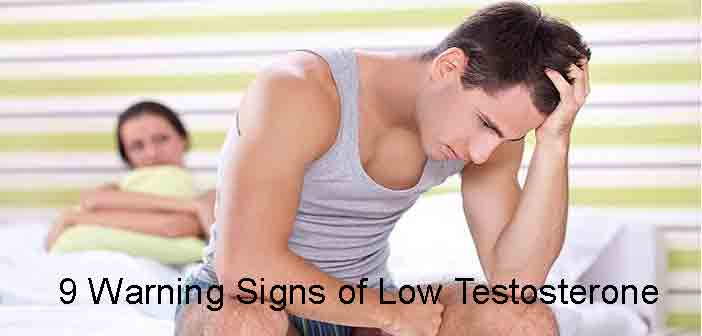Is it Low Testosterone?
Testosterone is a hormone that is produced by the body. In men, testosterone is mostly produced in the testicles and is responsible for stimulating sperm production and sex drive, as well as building muscles and bone mass. As men age, testosterone production decreases. When production drastically drops or ceases, a range of symptoms and complications can occur. Signs of low testosterone (low T) are often subtle and are mistaken as a natural part of aging.
What is Low Testosterone?
Low testosterone is diagnosed when levels fall below 300 nanograms per deciliter (ng/dL) (NIH, 2012). Andropause—decline in testosterone production—is the male counterpart to menopause. But while women experience a drastic decrease in estrogen at a certain age, the production of testosterone in men decreases gradually. If it decreases more than it should, men can experience a wide range of symptoms.
Low Sex Drive
Testosterone plays a key role in a man’s libido. As men age, most of them experience a decline in sex drive to varying degrees. However, someone with low T will likely experience a more drastic drop in his desire to have sex—which is often noticed by him or his partner. During sex, low levels of testosterone can also make it difficult to achieve an orgasm (womenshealth.gov, 2011).
Difficulty Achieving Erection
Testosterone stimulates a man’s sex drive—and it also aids in achieving an erection. Testosterone alone doesn’t cause an erection, but it stimulates receptors in the brain to produce nitric oxide—a molecule that helps trigger an erection. Low T is also linked to many conditions that cause erectile dysfunction, including obesity, diabetes, and atherosclerosis.
Low Semen Volume
Testosterone plays a role in the production of semen, the fluid that aids in the motility of sperm. It’s pretty simple: the more testosterone a man has, the more semen he produces. Men with low T will notice a decrease in the volume of their sperm during ejaculation.
Hair Loss
Testosterone plays a role in several body functions, including hair production. Balding is a natural part of aging for many men. However, men with low T may experience a loss of body and facial hair
Fatigue & Lack of Energy
Men with low T have reported extreme fatigue and a noticeable decrease in energy levels. If you are tired all of the time, despite getting plenty of sleep, or if you are finding it harder to get motivated to hit the gym or exercise, you might be experiencing symptoms of low testosterone.
Loss of Muscle Mass
Because testosterone plays a role in the building and strengthening of muscle, men with low T might notice a decrease in both muscle mass and strength, especially in their arms, legs, or chest (Mayo Clinic, 2012). Those who try to reverse the muscle loss through weight training might find it difficult to build or rebuild muscle.
Increase in Body Fat
If losing muscles wasn’t bad enough, men with low T also experience an increase in body fat. Although the reasons behind this are not entirely clear, research has shown that the genes that control body fat percentage are also responsible for circulating testosterone levels in men.
Decrease in Bone Mass
The weakening of bones—called osteoporosis—is often thought of as a condition that happens only in women. However, men with low T can also experience bone loss because testosterone aids in the production and strengthening of bone. Men with low T—especially older men who have had low T for years—are more susceptible to bone fractures, usually in the hip, feet, ribs, and wrists.
Mood Changes
Women often experience changes in mood during menopause, when their levels of estrogen drop. Men with low levels of testosterone can experience similar symptoms. Testosterone is often described as “fuel” for men. It drives many physical processes in their bodies. But it also boosts their mood and mental capacity. Research has shown that men with low T are more likely to experience depression, irritability, or a lack of focus

